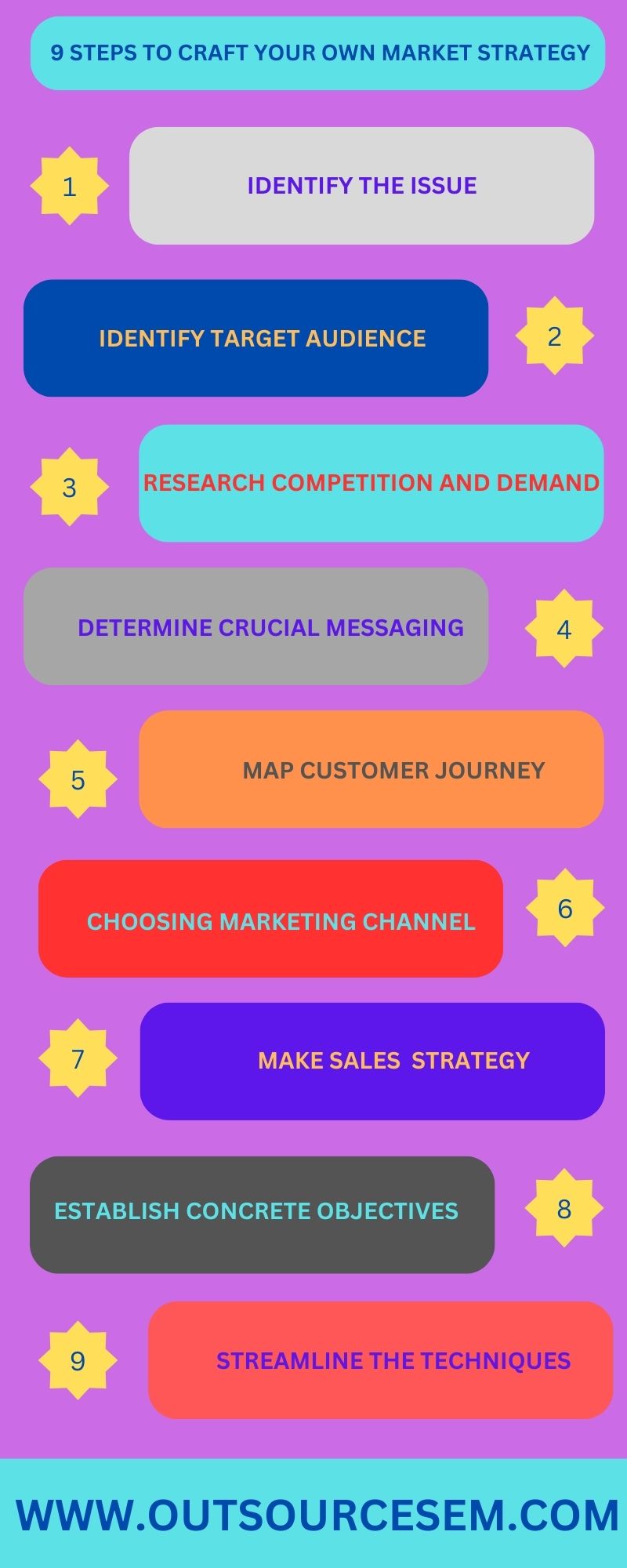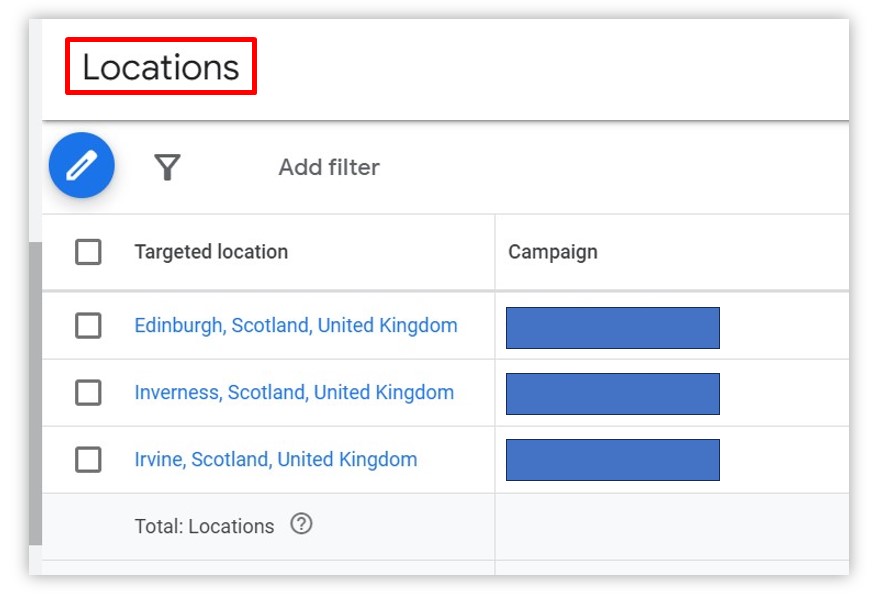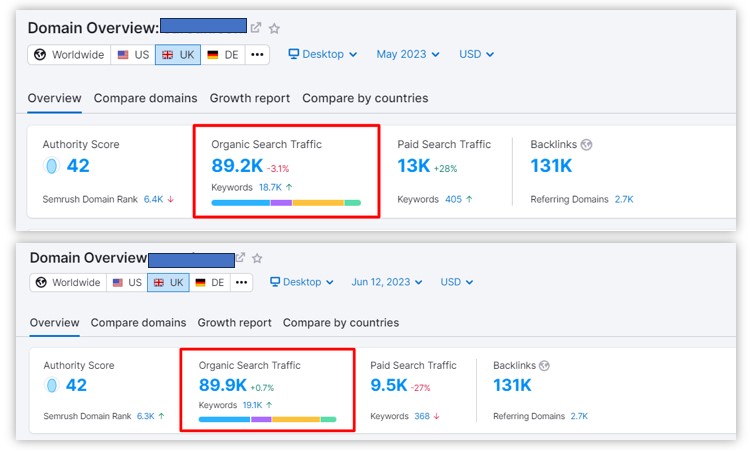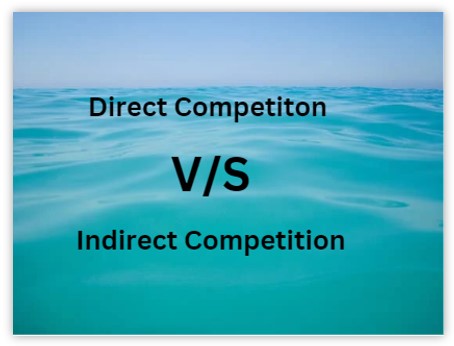A go-to-market (GTM) strategy is a carefully planned and executed approach businesses use to bring their product or service to the market and attract potential customers. It is a crucial part of a company's overall business strategy and helps determine how it will reach its target market, generate leads, boost online sales and much more. It also involves creating a sales funnel to guide customers through the buying process. In this blog, we will discuss what is a go-to-market strategy and the advantages of having a go-to-market plan.
A successful GTM plan involves understanding the product or service, the target market, and the competition. It also involves creating a sales funnel to guide customers through the buying process implementing inbound marketing and lead generation tactics. A successful GTM plan involves understanding the product or service, target audience. and the competition. By carefully crafting a GTM strategy, businesses can increase their chances of success in launching and selling their offerings.
Who needs a go-to-market (GTM) strategy?
A go-to-market (GTM) strategy serves as a comprehensive blueprint, outlining how a company intends to introduce a new product or service to the market or launch an existing product in a new market. It involves coordinating and aligning various departments within a company, including marketing, sales, product development, and operations, to bring a product or service to market effectively. Crafting a well-thought-out GTM strategy is pivotal for the success of a new product or service launch, benefiting a diverse range of businesses, such as:
1. Startups: Emerging ventures aiming to enter a new market or introduce a new product require a robust go-to-market strategy to strategically position their offering and gain a competitive edge, facilitating accelerated growth.
2. Small businesses: Small enterprises must have a well-defined go-to-market strategy to stand out in a competitive marketplace. This strategy helps them target and reach their ideal customers, ensuring quick and efficient revenue generation.
3. Established companies: Even well-established companies stand to gain significantly from a go-to-market strategy. It allows them to refresh their offerings, reach new markets, and revitalize existing products or services.
4. New products or services: Any company launching a new product or service needs a go-to-market strategy to ensure a successful launch. It aids in determining the right target market, establishing a pricing strategy, and creating a marketing and sales plan to generate awareness and interest.
5. Entering new markets: Expanding into new markets is complex and risky, making a go-to-market strategy crucial. It enables companies to thoroughly research and understand the new market, identify potential risks, and develop a plan for successful entry.
6. Product line extensions: Companies expanding their product lines benefit from a go-to-market strategy. It helps gauge market demand, work on competition analysis, and develop positioning and messaging strategies to differentiate their offerings.
7. Increased competition: In increasingly competitive markets, having a go-to-market strategy is critical. It helps businesses stay ahead by identifying opportunities, addressing market gaps, and leveraging unique strengths.
8. Launching new channels: Businesses introducing new sales channels, like e-commerce or retail, rely on a go-to-market strategy to ensure alignment with the overall business strategy and effective promotion and sales of products or services.
9. Creating a cohesive approach: A go-to-market strategy unifies various aspects of a business, fostering a cohesive approach towards a common goal. It aligns the efforts of different departments, ensuring everyone works towards the same end result.
10. Measuring success: The strategy aids in measuring the success of product launches and market expansion efforts. By setting clear goals and metrics, companies can track progress, making necessary adjustments to achieve desired results.
6 advantages of having a go-to-market (GTM) plan
Implementing a well-thought-out business-to-business (B2B) go-to-market plan provides entrepreneurs, along with their marketing and sales teams, with a strategic approach to launching products or services into specific markets efficiently. This involves defining target clients, devising an effective marketing plan, and creating a scalable sales and distribution model, leading to various advantageous outcomes:
1. Boosts revenue: Over time, a meticulously crafted GTM plan contributes to increased sales to B2B customers. A deep understanding of target consumers and their needs allows for the development of highly valued products, generating more income.
2. Brand recognition enhancement: A comprehensive GTM plan integrates marketing strategies aimed at elevating brand recognition. This facilitates quicker recognition of your product or service by customers, fostering trust and credibility in the market.
3. Cost reduction: GTM planning is an excellent method for lowering costs associated with introducing new products or services. Preparing ahead and having a well-defined plan helps avoid wasting time and money on ineffective strategies.
4. Productivity and efficiency improvement: A GTM strategy enables teams to work more efficiently by setting clear objectives and defining the necessary procedures to achieve them. This results in a more efficient use of resources, an improved customer experience, and a shorter time to market, ultimately leading to increased earnings.
5. Customer relationship enhancement: A well-executed GTM plan helps build relationships with customers and establishes trust in the market. Understanding customer needs allows for the delivery of high-quality products, promoting a positive image of the business. Increased customer trust leads to greater loyalty.
6. Competitive market advantage: An effective GTM strategy provides a competitive edge by better preparing for the launch of new products and services. Additionally, it helps staff identify potential opportunities and establish a distinct path for professional development.
9 steps to craft your own go-to-market strategy

You are considering entering a new market or have developed an innovative new product. You recognize that your initiative requires a go-to-market strategy in order to be successful, but what does that involve?
1. Identify the issue
Each successful product launch addresses a distinct issue. To craft an effective go-to-market strategy, start by identifying the issue your product or service aims to solve. Understand the pain points and challenges faced by your target audience. Conduct thorough market research to grasp the dynamics of the industry, customer needs, and competitor landscape. Clearly define the problem you're addressing to ensure your GTM strategy aligns with the market demand. This foundational step provides a solid basis for developing a unique value proposition and tailoring your approach to resonate with customers, setting the stage for a successful go-to-market strategy.
2. Identify target audience
To ensure the success of your GTM launch, you must have a thorough understanding of your intended audience. To begin, formulate the following inquiries within your mind:
. Who is the intended recipient of the solution provided by your product?
. Which particular grievances does your product aim to resolve?
. Regarding a solution, how much is your audience willing to pay?
The two prevailing methodologies employed to delineate the intended audience are consumer personas and ideal customer profiles (ICP). These techniques collaborate in order to refine the consumer base and delineate the demographic characteristics of the target audience.
I. Ideal consumer profile - This strategy identifies the ideal consumer as an individual who encounters the same challenges that your product addresses. They are capable of purchasing your product, are conscious of the issue, and are presently seeking a resolution.
II. Consumer personas - Each person in your target audience is an individual with their own set of challenges, values, and objectives. By differentiating the various categories of individuals within your target audience through the use of buyer personas, you can understand your customers on a more human level.

3. Research competition and demand
Research competition and demand play a crucial role in crafting a successful go-to-market strategy. By thoroughly studying the competition, one can identify key differentiators and understand the market landscape, giving a competitive edge. Additionally, analyzing consumer demands and current market trends helps in identifying potential customer needs and preferences, which can be incorporated into the product or service offerings. This information aids in determining the target market and positioning the brand to meet the demand. Through extensive research, a well-informed go-to-market strategy can be crafted, taking into consideration both competition and demand, leading to a successful launch and sustained growth.

4. Determine crucial messaging
Deciding key messaging is a crucial step in crafting a successful go-to-market strategy. It involves determining the core messages that will be communicated to the target audience about the product or service being launched. This messaging should be clear, concise, and consistent with the overall brand positioning. It should also address the pain points of the target market and highlight the unique value proposition of the product or service. This step requires careful research and analysis to understand the needs and preferences of the target audience. The key messaging will form the foundation of all communication efforts and help create a strong and compelling go-to-market strategy that resonates with the target audience.

5. Map customer journey
After determining the buyer personas and messaging, the next step is to create a buyer's journey map. This depicts the route consumers follow from the moment they recognize their problem until they decide to purchase your product. This involves aligning your GTM strategy with the stages of the sales funnel and marketing funnel.A critical element of content marketing, buyer journey mapping enables you to present prospective consumers with the appropriate kinds of content at the appropriate moments.
By mapping the buyer's journey within your GTM strategy, you create a roadmap for success, enhancing customer experience and optimizing your GTM plan. Consider utilizing a Go-to-market strategy example or Go-to-market strategy template to structure this process and ensure strategic alignment with your overall GTM strategy.
The buyer's journey is frequently represented graphically as a sales funnel comprising three distinct stages:
I. At the top of the funnel, customers are aware of the issue they wish to resolve and are conducting solution research. They may not yet be conscious of the presence of your product. Attracting the customer's attention and encouraging them to think about your product is your goal at this stage.
II. During this phase of the funnel, customers compare your product to others that are on the market. In this phase, you must persuade prospective customers that your product is the ideal choice.
III. Customers determine whether or not to purchase your product at the bottom of the funnel. This phase's objective is to convince them to make a commitment.
6. Choosing marketing channel
Picking marketing channels is another crucial step in crafting a go-to-market (GTM) strategy. It involves selecting the most effective platforms and techniques to reach and engage with the target market. This step is informed by thorough market research to understand the audience, their preferences, and buying behaviour.
Marketing channels comprise the various forms of content employed to generate interest in a product and advance prospective clients through the marketing funnel. Social media, paid search advertisements, blogs, SEO content, and emails are all examples of digital marketing channels. The selection of marketing channels is contingent upon two key factors: the stage of the buyer's journey exhibited by potential consumers and the target audience.
Align channels and your digital marketing strategy with your target audience. It is crucial to ensure that the marketing channels selected are consistent with the content consumption patterns of the intended audience. For instance, if your ideal customer prefers YouTube to Instagram or Facebook, you might consider prioritizing YouTube advertisements over paid social posts.
Utilize distinct channels for each stage of the customer journey. Various forms of marketing content may facilitate a progression of consumers to the subsequent phase of the marketing funnel, contingent upon their current stage. For instance, content optimized for search engines may direct top-of-funnel consumers who are unfamiliar with your product to your website. When considering your product, case studies and webinars may be most beneficial for customers in the midst of the funnel. Additionally, at the bottom of the sales funnel, offering complimentary trials can assist in converting prospects into paying customers.
7. Make sales strategy
Your GTM strategy aims to sell your product, so you must decide how to sell to your target audience and convert prospective customers into buyers. Your sales strategy comes into play here.
The following is a list of the four most prevalent sales strategies. You may combine these strategies to accommodate your product and business model.
I. Self-service model: The customer makes the purchase independently. This is a typical e-commerce sales procedure, through which consumers locate and purchase products electronically. Although this alternative does not necessitate a dedicated sales force, it does demand a financial investment in marketing to generate website traffic.
II. Inside paradigm of sales: Your sales team nurtures potential consumers in an effort to persuade them to buy your product. This is a viable alternative for moderately priced products with moderate complexity, such as design software intended for teams.
III. Field sales model: Salespeople in the field sales paradigm concentrate on closing large enterprise deals. This option entails a greater sales investment and a lengthier sales cycle, but it offers a substantial return. One potential application of a field sales model is the distribution of HR management software to sizable corporations.
IV. Channel model: Your product is sold on your behalf by an external collaborator. Although this option restricts your control over the marketing of your product, it is the most cost-effective and can be effective if you form a partnership with a business that sells comparable products. Partnering with a grocery chain is one way to promote a novel variety of cereal, for instance.

8. Establish objectives
Each effective go-to-market strategy commences with well-defined objectives. Having goals provides you with measurable progress, a defined time frame, and specific objectives to strive for. In the absence of well-defined objectives, evaluating the effectiveness of a given strategy becomes challenging.
A well-defined strategy will help guide the sales funnel and ensure effective GTM marketing. This can include market research to identify the target market and create a tailored approach using inbound marketing techniques. By establishing objectives, such as lead generation, companies can design a detailed marketing funnel that outlines the specific steps needed to reach the target audience. A strong GTM strategy, supported by concrete objectives, can drive sales and increase visibility for the company. A good example of a GTM strategy could be promoting a new product line through a combination of social media campaigns and email marketing. A template can be used to outline the objectives and the actionable steps needed to achieve them.
Several goal-setting frameworks are provided below that can be utilized to establish quantifiable objectives. Depending on the requirements of your organization, you may opt to integrate these strategies in collaboration or implement them independently:
a. SMART goals: The acronym SMART goals facilitate establishing time-bound, specific, measurable, achievable, and realistic objectives.
b. Key performance indicators (KPIs): These are quantitative metrics utilized to monitor the advancement made in the direction of organizational goals.
c. Key results and objectives (OKRs): This strategy aligns the desired outcomes with the critical metrics that will be employed to assess advancement.

9. Streamline the techniques
Implementing an effective go-to-market strategy differs significantly from developing one. This is why it is critical to establish transparent procedures when introducing a product to the market: despite the meticulousness of your approach, its effectiveness is contingent upon the team's communication and implementation. For instance, the following should be taken into account when developing your GTM strategy:
Approaches to collaborating and communicating strategy among team members. Rather than allowing your strategy to accumulate dust in a drawer, consolidate the plans and projects that make up your strategy into a single, readily accessible location. A comprehensive work management application can assist you in achieving this. Coordinate processes, projects, and plans in a centralized place using Asana. Thus, team members can collaborate and work in the same environment where your GTM strategy resides.
Methods for course correction and objective monitoring. This means that rather than establishing objectives for your GTM strategy and subsequently neglecting them, devise a systematic approach to assess and monitor your advancement periodically. For instance, do so after each week or month. Distribute these updates via a centralized project management system to project stakeholders. Everyone will be on the same page as a result.
The manner in which processes can be standardized using templates. Each go-to-market strategy comprises numerous movable parts and components. However, although evaluating one's strategy for every new product launch is crucial, it does not necessarily imply the need to reinvent the wheel. Create process documentation and templates to standardize your go-to-market procedure to prevent duplication of effort. Create templates that delineate the procedures for ascertaining the target audience, refining the messaging, etc. Additionally, incorporate a comprehensive template that serves as a roadmap for formulating the entirety of the GTM strategy. Select a project management application for your team that enables the creation and sharing of templates for your team's routine processes.

Conclusion
A go-to-market strategy is an indispensable tool for any business launching a new product or service, entering a new market, or expanding its offerings. It helps businesses understand their target market, identify opportunities, and develop a cohesive plan to achieve their goals. Without a well-defined go-to-market strategy, businesses risk launching products or entering markets blindly, potentially resulting in wasted resources and missed growth opportunities. One way businesses can improve their go-to-market strategy is by utilizing white label SEO services. It refers to a partnership between two companies, where one provides the SEO services while the other presents them as their own. This strategy is especially beneficial for businesses with limited resources or expertise in SEO, as they can outsource SEO from a reputable agency and offer them to clients under their own brand.
Outsourcing SEO services to a digital marketing company has numerous benefits. It allows businesses to focus on their core competencies while still offering high-quality SEO services to their clients. Moreover, outsourcing SEO services provides a data-driven SEO report after the SEO professionals conduct a thorough SEO audit to analyze the performance of the website using the latest SEO tools. You can avail of white label go to market services and achieve the desired marketing goals.
A significant investment is required to bring a product to market. However, with a firm framework to determine your audience and communication, specific objectives, and transparent processes to execute your strategy, you can position your next launch for success. By following these nine stages, developing an effective go-to-market strategy becomes a bit easier. When launching a new product, getting organic traffic is crucial. We help businesses and industries with their SEO needs and requirements with our PPC (Pay-per-click) advertising services, including electrician PPC, roofing PPC, flooring PPC, lawyer PPC, and small business PPC services.
References:
• 9 Steps to build a successful go-to-market strategy (with examples)
• How market types shape marketing and SEO success
